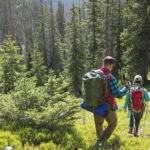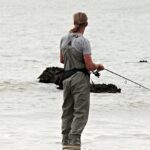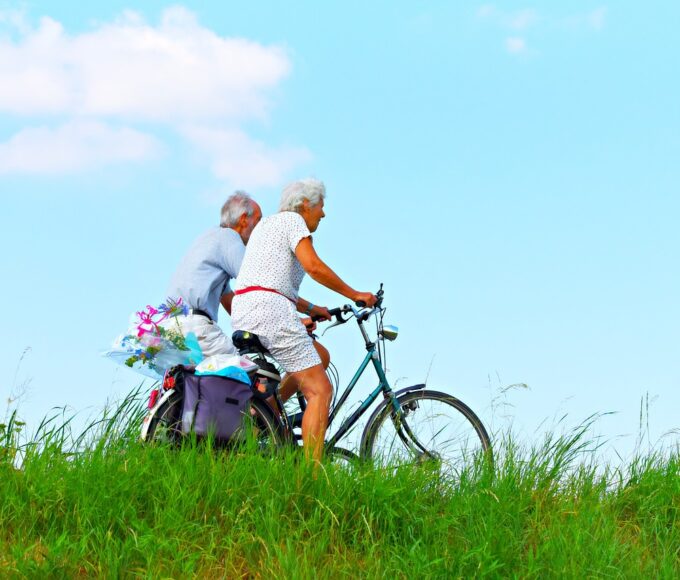Recent Posts
Skiing Vs Snowboarding: Differences
25th July 2023Best Tips For Fishing: Beginners and Intermediate Fishers
25th July 2023Cycling Safety Measures and Best Practices
16th July 2023Benefits Of Cycling For Physical and Mental Health
15th July 2023Basic Safety Rules For Climbing Properly

Climbing is an extreme sport that consists of climbing along a wall via a path, called a “climbing path,” to go the top of a rock, a mountain, wall ice or a human-made structure (block, climbing wall) with or without the aid of equipment.
This sporting activity is considered dangerous because the slightest mistake can cause the climber to fall and cause severe injury or even death in some cases.
Whether you are a beginner or an experienced climber, it is essential to know and respect safety techniques. Learn here about the different types of climbing you can practice, the risks of this extreme sport experienced by climbers, and the basic safety rules to indulge in the pleasures of climbing safely.
The Different Ways To Practice Climbing
Two main types of climbing are defined by the method used to move along the wall and reach the summit.
Free climbing, also known as “bare hand climbing” by the general public, includes all climbing practices in which the climber uses only his physical abilities and the catches that the nature of the terrain offers to climb successfully. In other words, no artificial help is used to climb.
These climbers extreme will serve as the magnesia (sodium carbonate) which can dry fingers and prevent it from sliding when the climber clings to an outlet, and climbing shoes to improve the grip of the feet by friction on any wall. The only security equipment used is the belay system, which is essential to reduce the consequences of a climber’s fall.
Artificial climbing is a climbing style in which equipment is essential, as the climber ascends by climbing or hanging on his/her equipment. He uses different anchor points (spits, pitons, hooks, wedges, etc.) to hoist and hang stirrups on these anchors to stand up. The material plays an essential role in this type of practice because it makes it possible to overcome the lack of natural grips.
After, there are different ways to climb freely or artificially. They vary according to the nature of the terrain (mountain, rock, wall of ice, artificial wall, etc.), the technique of progression to achieve the ascent (at the head, second, sight, rope stretched, roping , etc.) and the level of equipment of natural climbing sites (SNE), sports venues or adventure fields.
Climbing is usually done on a rock, but some climbers lacking adrenaline have developed new playgrounds to practice this extreme discipline: the via ferrata (cliff climbing), the adventure trail, the climbing of trees, urban climbing, dry-tooling (ice climbing), or more recently parkour.
One must never forget that each climbing route has its characteristics, such as the type of rock (limestone, granite, gneiss), the equipment put in place by local climbers, the weather (especially the avalanche risk) and the rules specific to a geographic area, etc. It is essential to learn about the specificities and potential dangers of the climbing route you want to take.
Safety Rules For Practicing Block Climbing, Difficulty And Speed Without Danger
If you want to practice climbing entirely independently, it is essential to know safety techniques. Proper training is by far the best guarantee of safety. In case you start, you must contact a club or a professional to begin your initiation. Do not overestimate your physical and mental abilities by going directly up to rock without training, because the mountain mistake is not forgiving and can be fatal.
First, climbing with rope, speed or difficulty must be practiced by two minimum partners, a climber and at least one insurer (2 for speed events). Even though each partner has a specific role and a particular mission, they are interdependent. There is a real co-responsibility between the climber and the insurer (s) of their actions, and therefore of their safety. Excellent communication between the rope companions is, therefore, fundamental.
Concerning climbing on a block (without a rope), the practitioner occupies, in turn, different roles: climber, then betrayer, then in rest or waiting for the position. The “blocker” has some responsibility for safety and must remain constantly vigilant in the reception area (when he is a climber or partner) and the waiting or rest area.
Choose Climbing Routes Adapted To Your Level
It is crucial to inform yourself and select climbing routes that correspond to your level of practice and that of your teammates. Do not go climbing Mont Blanc without being physically and mentally prepared. Otherwise, you risk leaving your life and that of your partners.
Always wear a helmet
The helmet is vital because it protects you from falls of stones or materials, as well as the possible shocks during a fall. All climbing practitioners (climbers, insurers, coaching) must wear a helmet. This security requirement is also required for all professionals of the FFME and its structures (federations, committees, clubs).
Climb with new and right quality equipment
The main recommendation is to use new equipment that meets the requirements of the European “mountaineering and climbing equipment” safety standards. To ensure your safety, the climbing equipment you must use must be affixed with CE marking. It is essential to study the manufacturer’s manual for the best use of the equipment.
After having opted for quality equipment and especially in compliance with safety standards, each climber must carefully check the condition of its equipment before each use.
Connect with a node at eight followed by a stopping node
It is necessary to be very vigilant and never be distracted during this operation. Check the knot carefully with your climbing partner, as well as your belay system before starting the climb. make sure you always tie a knot to the end of the rope or tie the rope.
Ensure that each maneuver is performed correctly
Climbing requires constant concentration to prevent the worst from happening. If you play the role of the insurer, pay attention to your partner constantly.
Recent Posts
Techniques and Best Practices for Anglers
21st November 2023Hiking Vs Trekking: Differences and Similarities
12th August 2023How to Lose Weight by Cycling
12th August 2023How to Choose Skis for Beginners
12th August 2023Related Articles
Types of Hiking Trails: Options to Explore
Hiking captures the hearts of people across ages and fitness levels as...
By Fortunatus Adunola25th July 2023Benefits Of Cycling For Physical and Mental Health
Cycling, a broadly embraced hobby, brings forth manifold blessings for each physical...
By Fortunatus Adunola15th July 20235 proven strategies to teach your child skiing.
It’s done, your holidays in the mountains are reserved! To you, the...
By O. Johnson Taiwo11th June 2019Five Activities To Do With Children
Going skiing with kids can often be stressful for parents. But do...
By O. Johnson Taiwo11th June 2019














